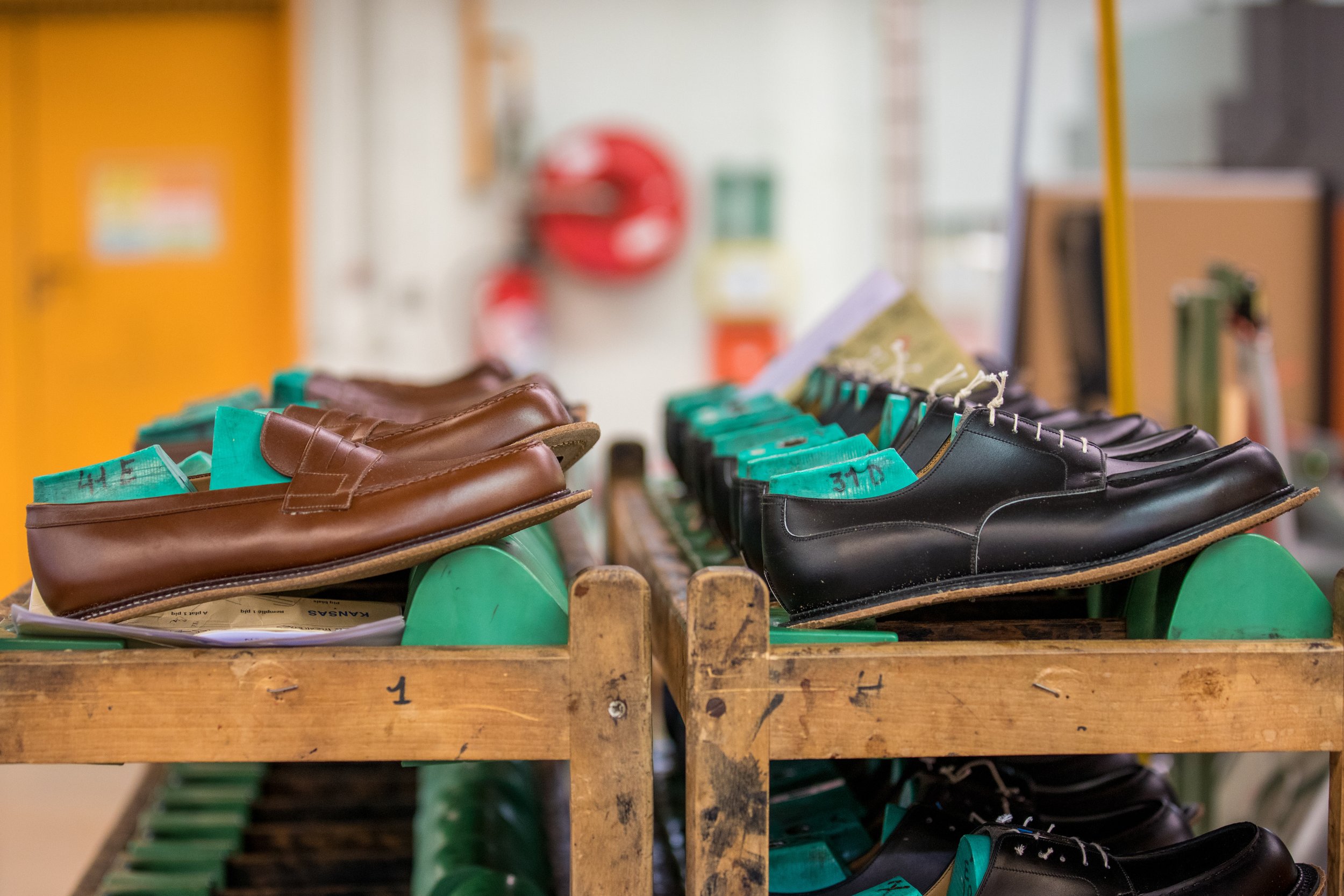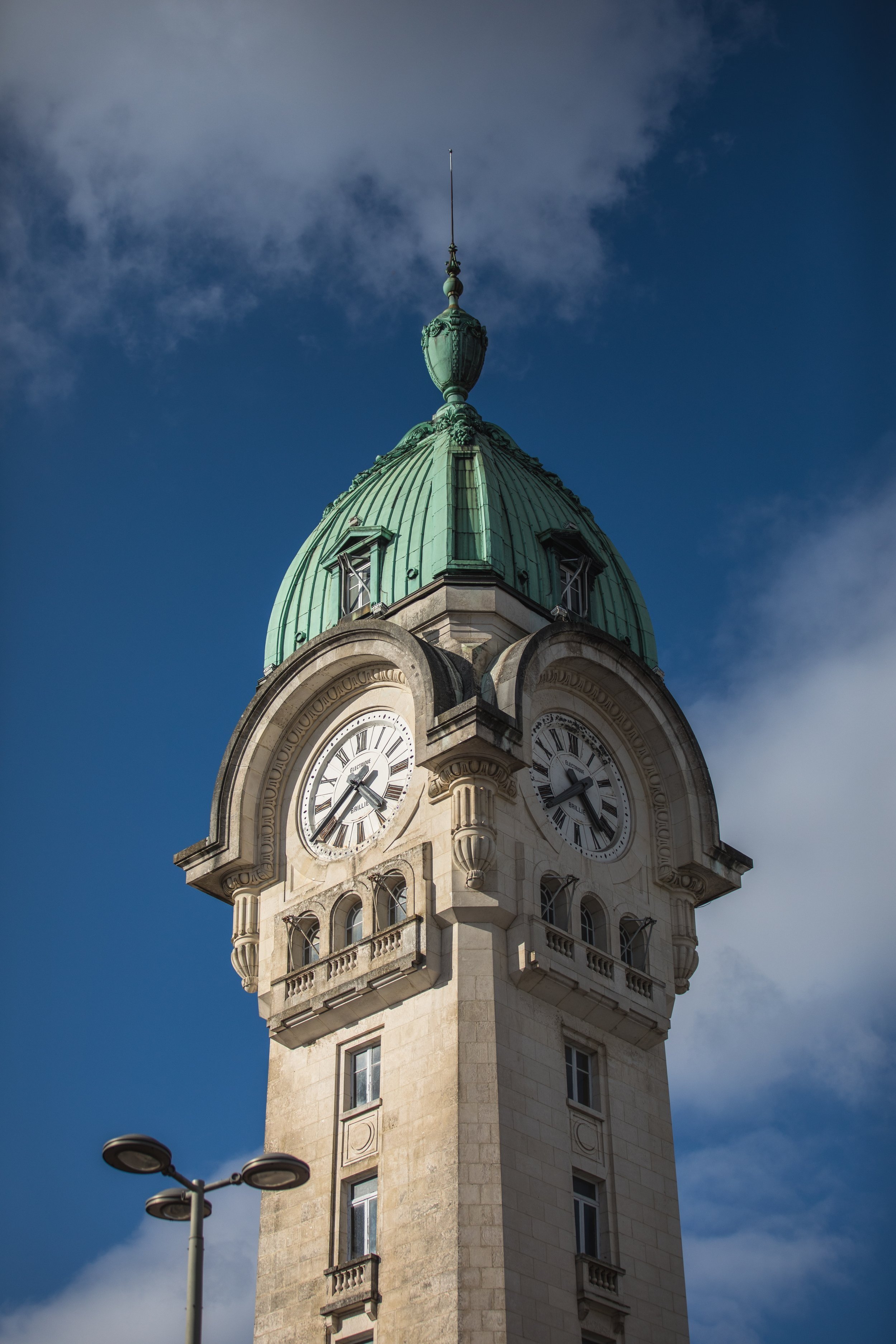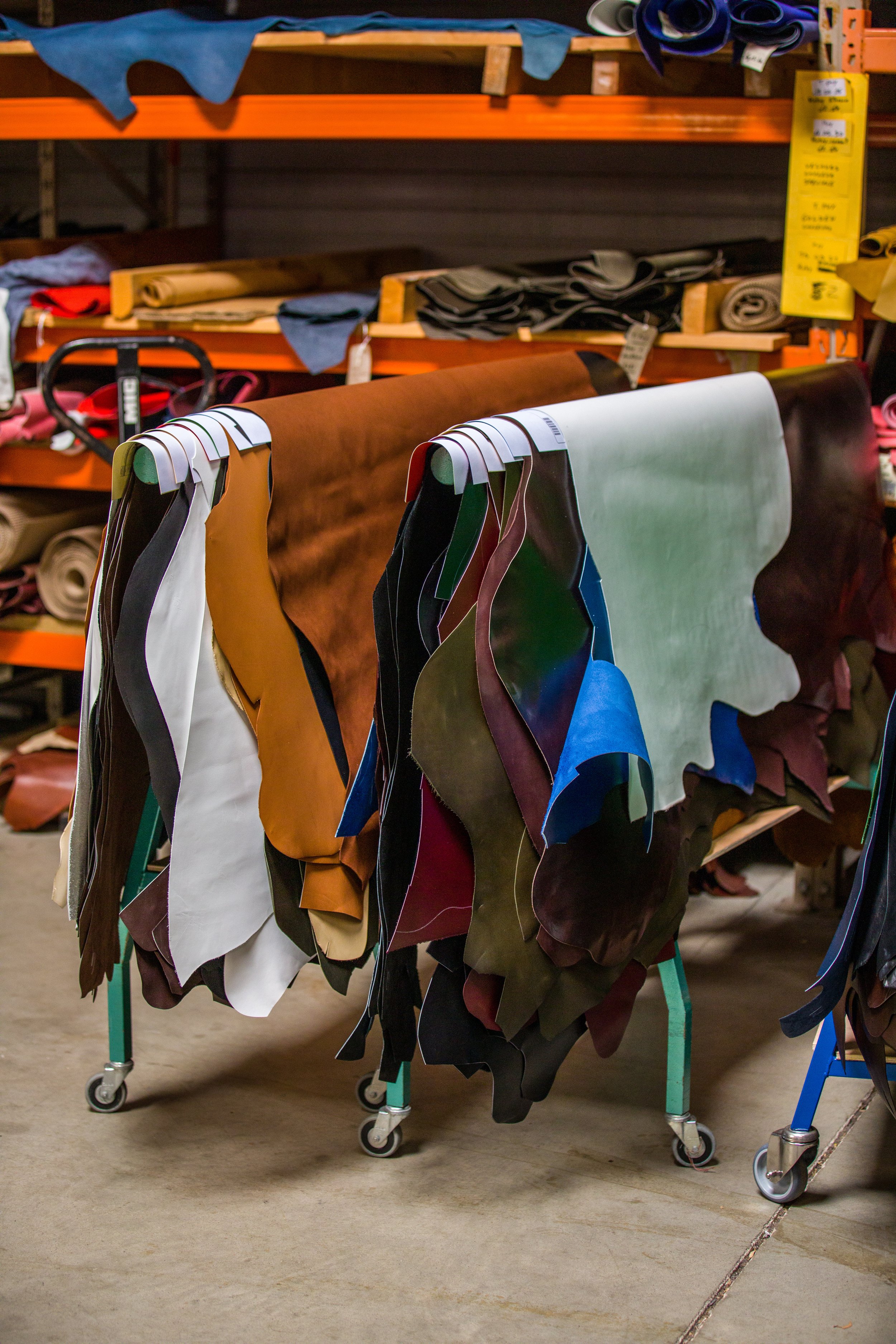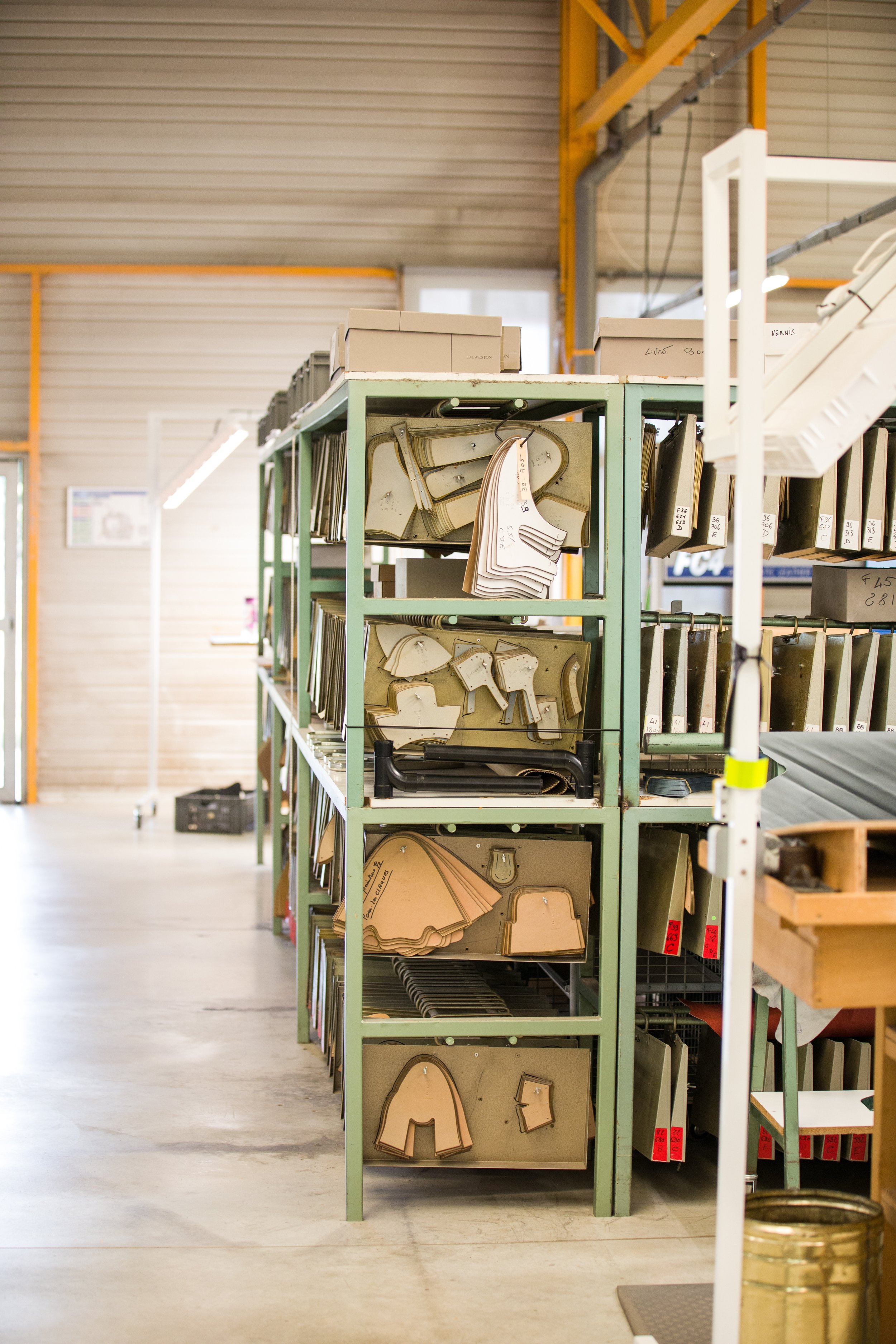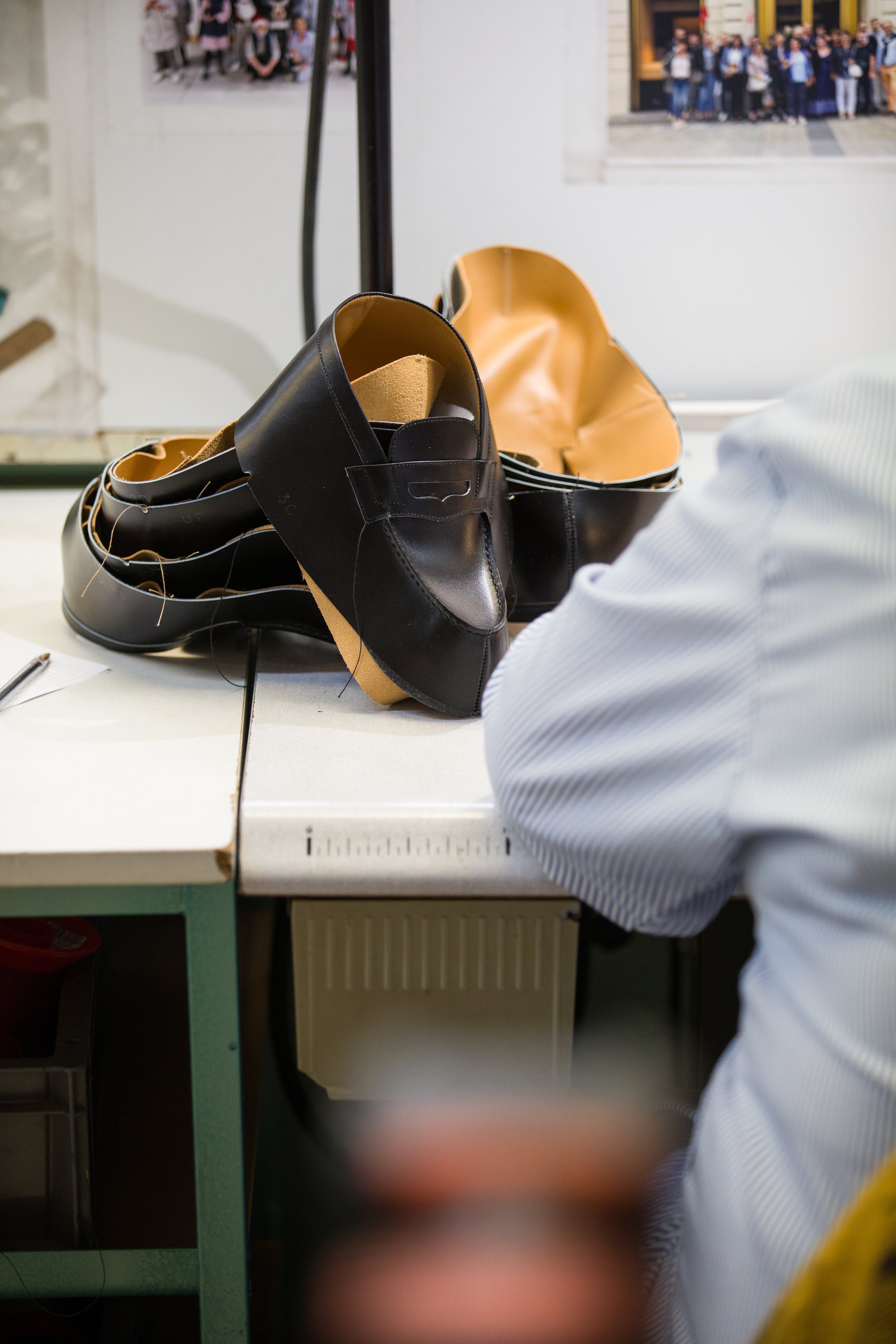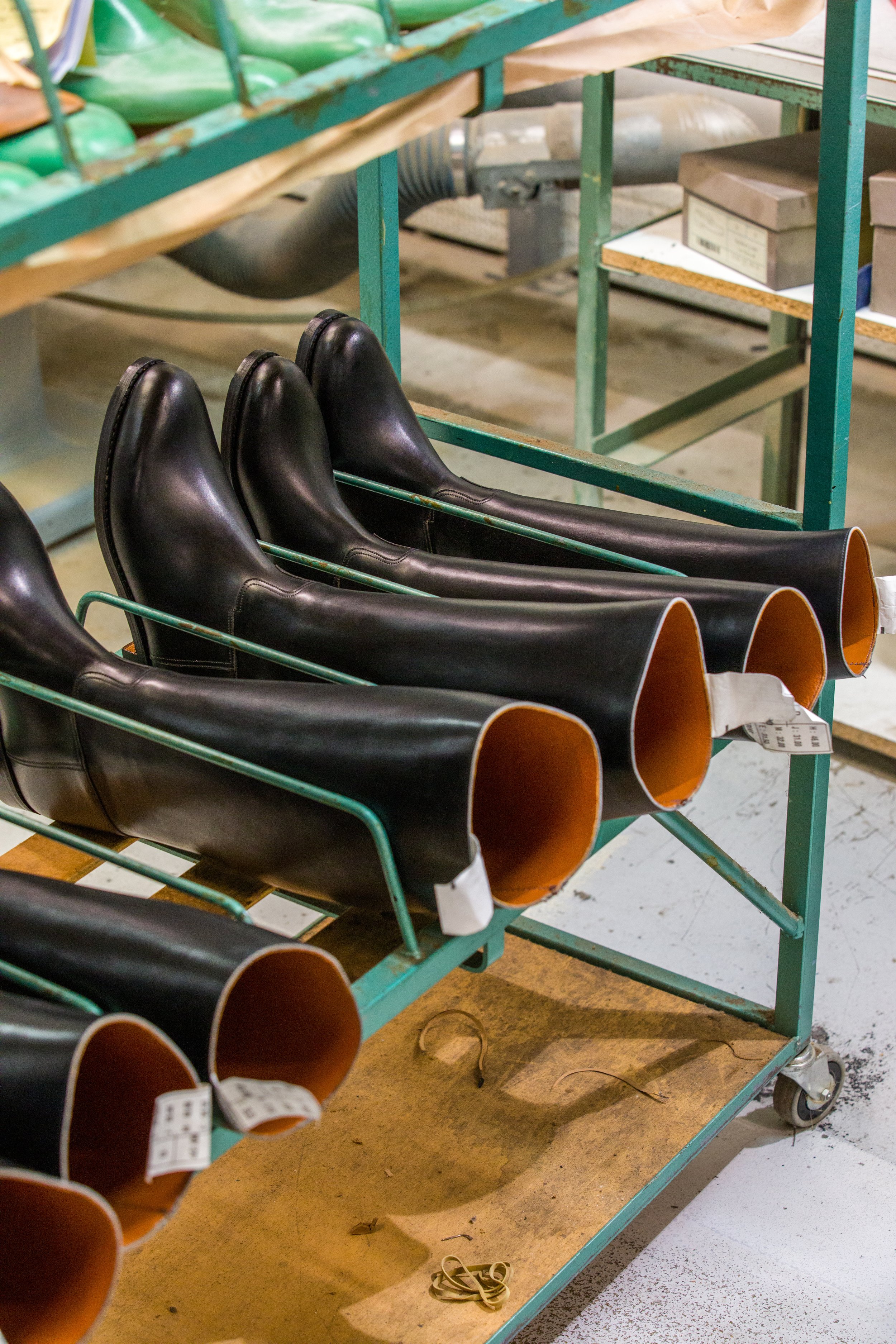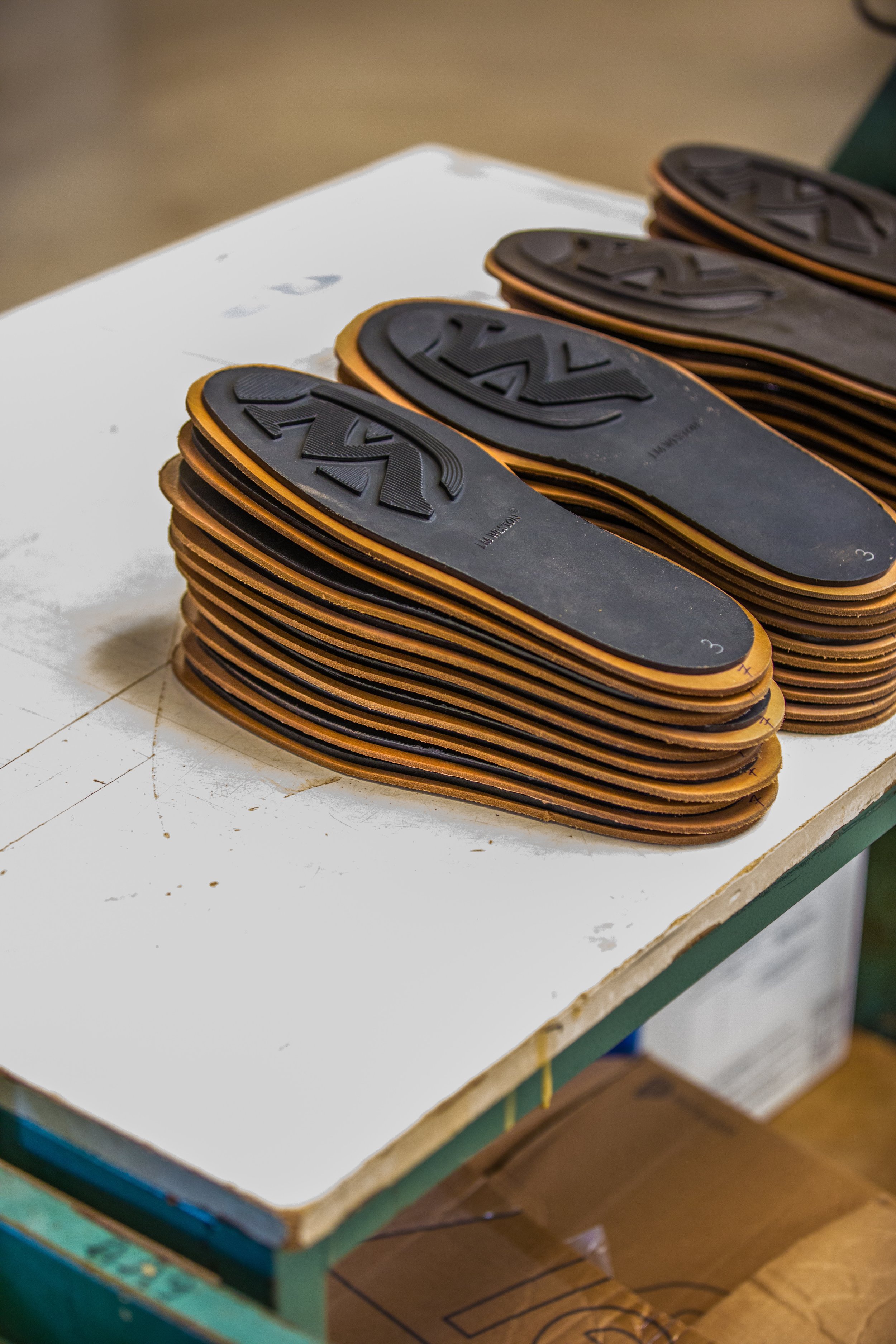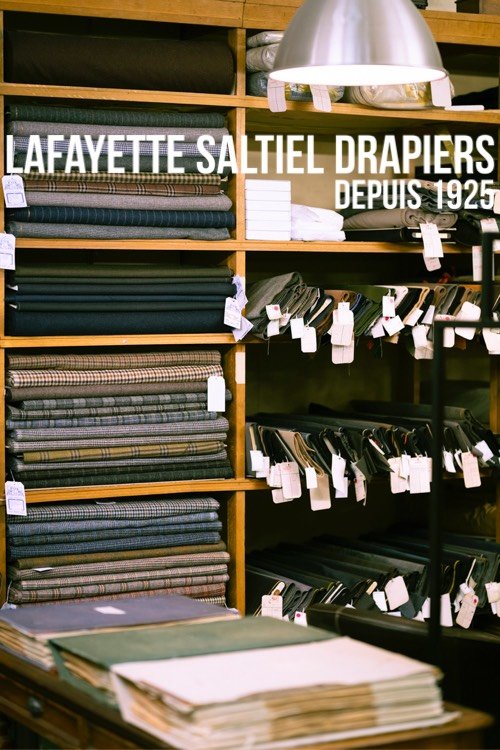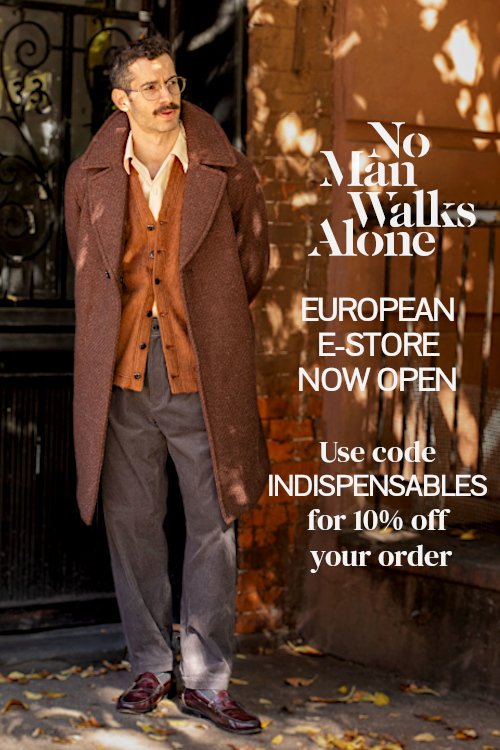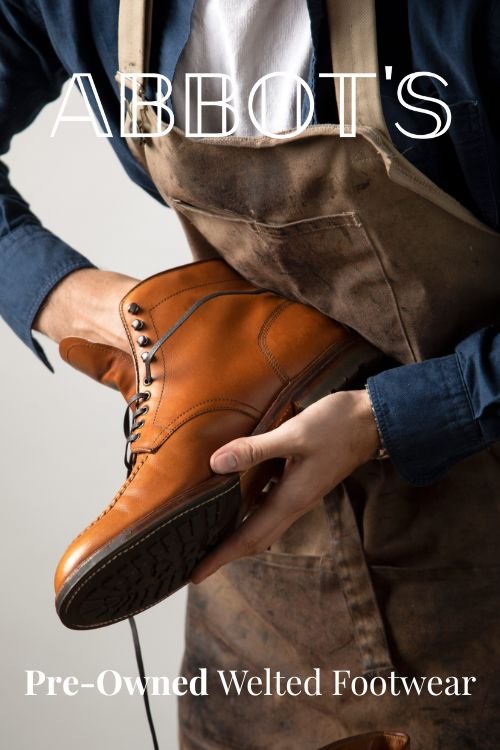J.M. Weston Factory, finest French craftsmanship
/J.M. Weston
French savoir-faire
Note: This article is the humble point of view of three shoe and menswear enthusiasts, with a strong sense of pride. France still producing some of the finest shoes in the world. All the more so as Weston also has its own tannery for leather soles. We have no reason to be jealous of the shoe industry in Northampton, England.
March 22nd 2023. Paris Austerlitz 6h30. Heading to Limoges.
After a 3 hour train journey, we arrived in Limoges. A cab is waiting to take us to one of France's last shoe factories, a favorite of Westonians everywhere.
The station is well worth a visit. An Art Deco masterpiece listed as a historic monument since 1975.
But let's move on to La Manufacture on the outskirts of Limoges.
Foreword
Our first contact with a shoe is its aesthetics, its shape. It's the point of entry, directly accessible to us, and undoubtedly one of the most important criteria of desirability. From the outside, many new shoes are beautiful. But very few of us have the chance to see the inside, the heart of the beast. That's the hard part.
Making beautiful shoes, inside and out, that's the hard part.
Visiting the factory, we were able to see every stage in the making of a pair of J.M. Weston shoes. Far from taking the easy way out by refusing to choose economical materials for the invisible parts, J.M. Weston remains true to its quest for excellence. The hidden elements, just as important as the visible ones, are designed and chosen with the same concern for quality.
All stages of production are carried out at the factory, including some of its sneakers over the last few years. So it's not surprising that the factory covers some 10,000 m² and employs up to 200 people.
The leather
The selection of leathers is draconian. On a classic box calf skin - a very smooth, chrome-tanned calf leather measuring around two square meters - between four and five pairs can be made per skin.
Since color can vary slightly from one skin to another, each pair is necessarily made from the same skin. This is the "pair in skin" rule. J.M. Weston uses over 90% French leather - the remaining 10% are mainly exotic skins. For example, they continue to work with Tanneries du Puy, owned by the company until 2015.
This meticulous, respectful approach to leather helps forge the unique identity of J.M. Weston shoes, where the upper* becomes much more than just a "body" - it embodies the commitment to authenticity and durability, even in the often overlooked details.
We'll be talking about the leather soles in a later article, as these are made by a tannery owned by J.M. Weston, the extra-slow vegetable-tanned Bastin tannery.
*The upper is the leather covering the upper part of the shoe.
The cut
Once the leather for the upper has been selected, it comes to the cutting stage. Each of the parts that make up the upper are cut out so that they can be assembled later.
We refer to the Claque (front part of the upper), the Garants (the two parts of the upper that carry the laces), the Bout (front end of the upper) or the Quartiers (pieces of leather attached to the back of the upper). Or even the Languette, with which you're already familiar.
At J.M. Weston, this step can be carried out using three different processes. From the most manual to the most automated, because the brand never refuses technical progress when it brings real benefit.
Exotic leather is always cut by hand using a trencher. Other leathers are cut by an automated laser-cutting machine. They can also be cut more manually using metal cutter, a kind of cutting mold similar to that used in pastry-making.
Stem assembly
As in the case of a garment, once the various leather parts have been cut, they are transferred to another part of the factory, where all the stitching operations are carried out.
As the 180 moccasin is the brand's bestseller, its upper benefits from its own production line, with a team of seamstresses - known as mechanics - specially dedicated to the creation of its upper.
See some examples below.
In the case of the legendary Chelsea Cambre, less stitching is required. Yes, the Cambre upper is cut from a single piece of leather. Unusually, there are no side seams. There's just one at the back and one at the elastics.
To do this, the upper is shaped on a wooden template. Moistened, the skin elongates under tensile stress and tends to retain this elongation more or less permanently. This is also known as "leather lending".
This unique technique not only gives the shoe a very pure line, but also minimizes the risk of walking creases.
“Mood setting" in the "marriage hall”
It's not just the camber stems that are "tempered", i.e. moistened to increase their malleability. By becoming more supple, they are better able to withstand the various rough treatments to which they will subsequently be subjected.
The other stems are also "tempered" in the "marriage room" for at least 24 hours. In other words, the stems are stored in this room prior to assembly, where the soles are married to the stems.
You can't see it in the photos below, but this room is very humid indeed, with steam escaping as you enter.
The lasts hall
Another impressive room in the factory is the “last park”.
This is where all the lasts used by the brand are stored. It is on these lasts that the uppers are curved before being mounted on the soles.
One last per half-size and per width. Multiplied by two for each side, right and left, we arrive at a total of over 40,000 lasts! Quite considerable. So you're (almost) sure to find the right shoe for you.
Assembly: stem and sole assembly
The first assembly parts are made at the factory. The sole that serves as the first assembly is supplied by the Bastin tannery. Next comes the making of the wall that will bind together the stem, the welt and the mounting first. We've seen several types of mounting blocks: engraved wall with ordinary interfacing or boot interfacing, and glued wall.
In this case, the mounting bases below are wall-attached - i.e. a wall is added, glued and reinforced with interfacing - in white.
When the stem and first assembly are ready, they can be assembled.
J.M. Weston uses several types of assembly. Goodyear, of course, a technique invented in the United States and brought back by Eugène Blanchard, son of the brand's founder. But also the famous Blake stitching, for example for the lightweight 180.
Below you can see that the first assembly is placed under the last. The stem is also on the last, and is attached to the first assembly by manually nailed staples. It may not look like much, but this operation is quite physical: the rod has to be bent and stretched correctly on the form.
To this is added the characteristic GoodYear welt. At this stage, pairs with fragile skins are "shell-covered", i.e. covered with a plastic film to prevent damage to the upper during the following stages.
Below, the stitching of the welt on the mounting wall of the first pair.
As a prelude to the union with the outsole*, a real cork lining is added between the insole and the outsole in contact with the ground. And let's not forget the beech-wood arch support, a vital element that acts as a kind of shock absorber.
*in other words, the outsole that treads on the ground
Once the outsole is in place, a groove is cut into the sole around its perimeter. This is also known as engraving. It is in this groove that the stitching is made to join the outsole to the welt and thus to the whole shoe.
This seam is protected by closing the engraving, a step that will be carried out definitively with hot wax during the bichonage process.
A small-stitch marking is then applied, to help press the seam into the welt.
Then comes the fitting of the heel (usually in wood) and the finishing touches in the "pampering" workshop.
Among other things, the shoes are polished and fitted with their insole. They are now ready to be sold in boutiques.
The “Derby Chasse” by J.M. Weston: Refined Bottier Art
How can you visit the Manufacture J.M. Weston without mentioning the Derby Chasse ? Created in the 1930s, it is still one of the most emblematic models in men's footwear today.
The Derby Chasse boasts a series of sophisticated technical details, such as the Norwegian stitching, hand-stitched with fish-tanned linen threads, the engraved wall assembly and the jointed nose, all of which bear witness to J.M. Weston's expertise in craftsmanship.
Originally designed for mountain hiking, the Derby Chasse offers reliable waterproofing and appreciable solidity. On foot, they stand out for their firmness and endurance, with lifespans frequently exceeding thirty years.
Hand-stitched Norwegian assembly takes one day per pair. Not to mention that the yarns are made in-house: 17 strands of linen are assembled and coated with wax and resin (known as "poissés") to make them rot-proof and waterproof. In other words, it takes time! Up to several months in total, if you add up all the different stages.
The “Bell repair” and club
A brand that is ready to see its shoes come back is obviously a very good sign. You need to have confidence in your fittings, your leather and your ability to get them back into shape quickly. Not to mention the fact that this allows for continuous improvement, so that any defects can be quickly rectified.
Here's an example of before and after.
Very few brands offer this service, with the possible exception of John Lobb.
Some 10,000 pairs go through this service every year. Whether it's for resealing, dyeing, repairing... In fact, when resealed pairs return from the factory, their soles bear the initial "W" inscribed inside what looks like a bell - in fact, it's the outline of the triumphal arch of the J.M. Weston logo. Owners of such pairs become part of the famous bell club or “club des cloches” in French.
We leave you with a dozen large-format images of the factory, which we hope you'll enjoy.
Thomas, Mathieu and Marcos.

